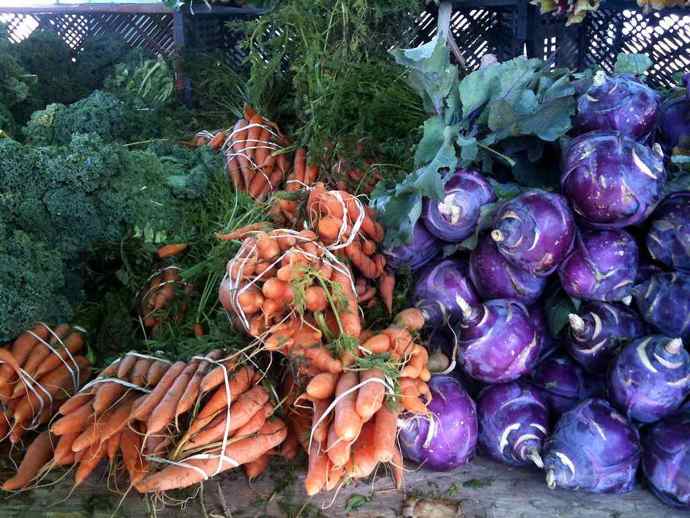Eating more local and seasonal foods can be easy, inexpensive and tasty! Here are 10 ways to eat more local food.
- Join a CSA (Community Supported Agriculture) program. CSA members pay for a weekly, bi-weekly, or monthly subscription, and get in return a box of vegetables and other locally-produced foods such as cheese, eggs, and breads or other food items. The CSA benefits farmers because they receive payment early in the season, and benefits consumers by giving them a box of fresh, local produce. You can search for local CSAs through Local Harvest’s website.
- Plant your own garden. It doesn’t get more local than your own back yard! Michele Owens’ book Grow the Good Life offers advice to beginner and experienced gardeners alike.
- Learn what is in season. Buying seasonal local produce ensures that you are supporting your area’s farmers, as well as providing your family with the freshest food possible. Organizations like Pennsylvania’s Buy Fresh Buy Local help consumers see what is seasonal in their state.
- Shop the local farmers markets. One of the oldest forms of direct marketing for famers, local farmers markets are gatherings where local growers can sell their fresh produce and value-added products. The U.S. Department of Agriculture (USDA) has set up a search engine for consumers to find information about their nearest markets.
- Visit “Pick-Your-Own” farms. Pick-Your-Own Farms are farms that allow customers to come in and pick their own produce, sometimes for a small fee. Similarly, gleaning programs have been established where consumers volunteer their services to pick produce that would have otherwise been wasted and donate it to local food banks for distribution.
- Research your restaurants. Farm-to-table cooking has become one of the hottest restaurant trends in recent years and, often, chefs will include the origin of their product on their menus. Organizations like Clean Plates have started compiling locavore restaurants into databases to make it easier and more enjoyable for consumers to eat healthily and sustainably in their local restaurants.
- Check your food labels of origin. Country of Origin Labeling Regulations require retailers to label the places of origin of their seafood, meats, produce, and nuts.
- Join a local food co-op. Food cooperatives are customer-and-worker-owned businesses where the customer pays a nominal annual fee and is, in turn, provided with high-quality, local food products.
- Freeze, can and preserve. During the bountiful summers, abundant fruits and vegetables can be frozen, canned and preserved for fresh, local produce later in the year.
- Buy Fair Trade. Search for Fair Trade certified products if local is not an option. Fair Trade USA uses a market-based approach to empower farmers to get a fair price for their work and harvest and contribute to their local economies.













